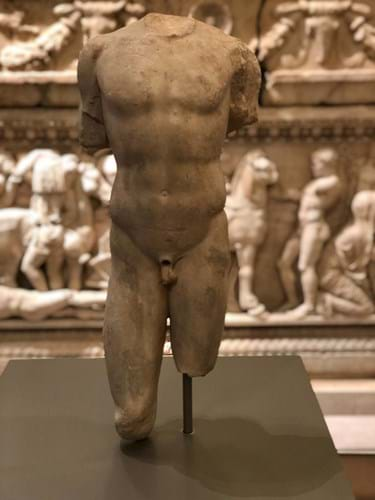
The two marble sculptures were originally excavated from the Temple of Eshmun at the site of Sidon in 1972. Swiss archaeologist Professor Dr Rolf A Stucky registered the items and they were later included on the Art Loss Register (ALR).
One sculpture was recovered when an antiquities dealer in Freiburg, Germany, was acquiring it from an Austrian dealer. The German dealer submitted a search to the ALR and after being alerted to its true identity its return was arranged by ALR.
The second sculpture was identified when a dealer in London contacted the ALR before its potential acquisition.

This Roman Marble Torso, 1st-2nd century AD is now on display at the National Museum in Beirut. Image courtesy of the Art Loss Register.
The sculpture was owned by a private collector and ALR contacted US Immigration and Customs Enforcement (ICE) in New York. The New York County District Attorney’s Office then seized the piece to ensure its return to Lebanon.
James Ratcliffe, director of recoveries and general counsel at ALR, said: “In principle there is nothing wrong with a trade in antiquities where items have lawfully entered the market, but trading in pieces that are looted is entirely wrong and must stop.
“Through due diligence checks it is possible for those in the trade to identify when they are being offered looted material and for it then to be returned… It is important to recognise how vital cooperation such as that between ourselves and the authorities in New York is to this work and we are very grateful for their assistance.”





